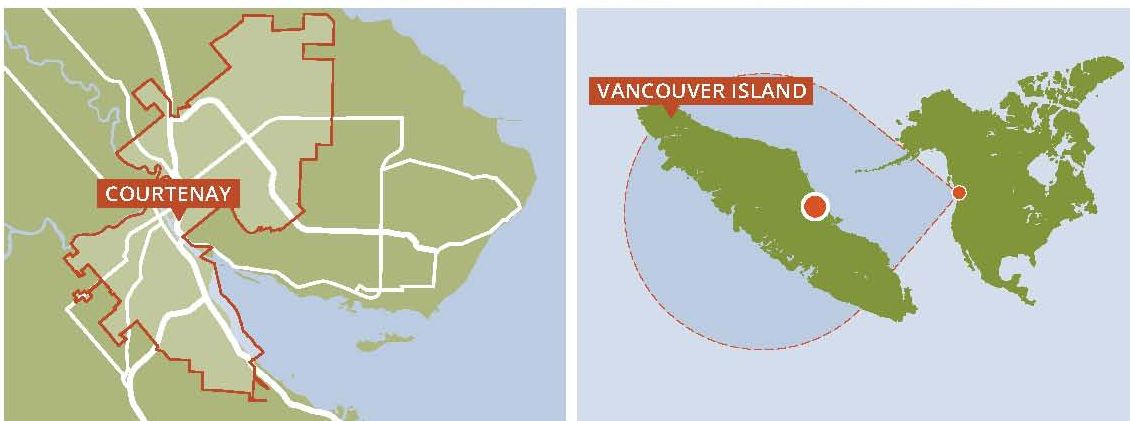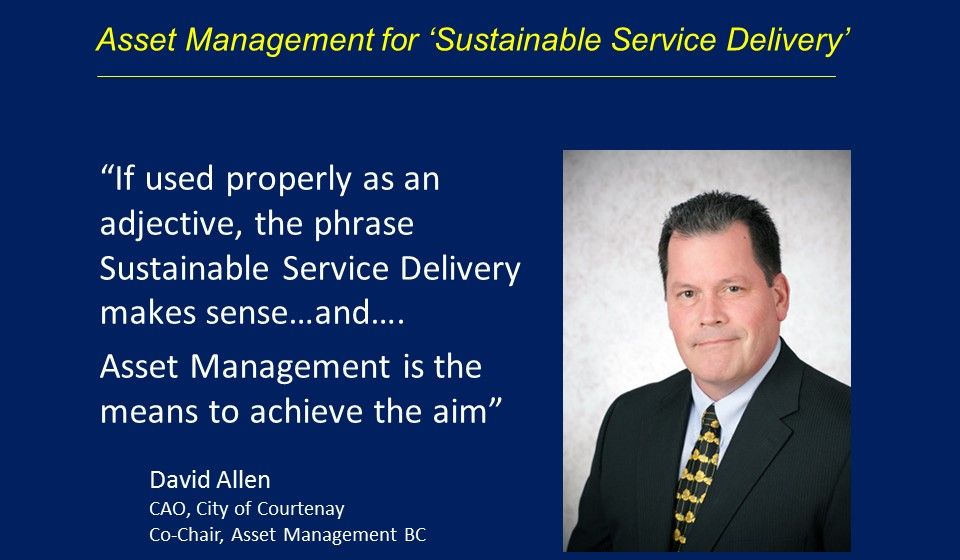"Benefits provided by nature are being recognized and incorporated into the delivery of local government services," states CAO David Allen, City of Courtenay
Note to Reader:
Commencing in 2011, the Comox Valley on Vancouver Island is a provincial demonstration region for exploring a new way of thinking about municipal infrastructure. When the initial Comox Valley learnings were showcased at the 2011 State of Vancouver Island Economic Summit, this started an Island-wide conversation about Sustainable Service Delivery, and painted the big picture for water sustainability.
In the article below, CAO David Allen elaborates on what the City of Courtenay (the largest of four local governments in the Comox Valley) has accomplished since 2013.

Released in December 2014, the “Asset Management for Sustainable Service Delivery: A BC Framework” establishes a high-level, systematic approach that supports local governments in moving toward service, asset and financial sustainability through an asset management approach. Development of the Framework was led by the Union of British Columbia Municipalities (UBCM) in partnership with Asset Management BC (AMBC) and the Province.
Sustainable Service Delivery in the City of Courtenay
“The occasion of the Courtenay centennial was a good opportunity to look at where we’ve come from, and how we want to progress into the future,” wrote David in his Message from the Chief Administrative Office, and published in the City of  Courtenay 2015 Annual Report (released on July 4, 2016).
Courtenay 2015 Annual Report (released on July 4, 2016).
“Asset management has been identified as a priority in our organization. Courtenay City Council adopted an Asset Management Policy in 2015, which formalizes our commitment to maintaining over $200 million in tangible assets – things like parks, roads, buildings, underground infrastructure, and equipment.”
Benefits of Proper Asset Management Principles
“Maintaining these assets to the best of our ability, maximizing their intended lifespan, and anticipating when they will reach the end of their lifespan, allows us to make informed decisions about what to replace, and when.”
“This is much more cost-effective than fixing things as they break down. For example, emergency water main breaks and repairs are not only time-consuming for our crews and disruptive to the general public. They can also cause collateral damage to public and private property.”
“As co-chair of Asset Management BC, I have seen first-hand how proper asset management principles have benefitted communities around the world. In Canada, the federal government is now taking asset management practices into consideration when assigning grants to communities – such as the $3.253 million the City of Courtenay was awarded in early 2016 for the Complete Streets Pilot Project.”
Ecological Services provided by Nature
“Achieving sustainable service delivery is the end goal of asset management and typically focuses on the physical infrastructure, or the built environment. Increasingly however, the benefits provided by nature are being recognized and incorporated into the delivery of local government services.”
“The ecological services provided by wetlands, aquifers, and community forests support stormwater management, drinking water protection, and climate change mitigation, all key issues for municipalities in BC.”
“Unlike the built environment, healthy ecological services are self-sustaining, and don’t require expensive operations and maintenance costs. In 2015 City Council recognized this in its 2016-2018 Strategic Priorities under the heading ‘We proactively plan and invest in our natural and built environment’.”
Organizational Realignment
“Another key focus in 2015 was the work done to support the employees who operate and maintain the infrastructure and deliver the services that the City residents and visitors rely on.”
“To that end we began to undertake two key initiatives: first, an organizational enhancement process that realigns the City’s organizational framework to enhance the delivery of City services, and; second, a Core Values process focused on creating a corporate culture that fosters a positive and productive work environment.”
A Look Ahead
“These initiatives are intended to set the City up for success and will be further developed in 2016,” concluded David Allen.
To Learn More:
Download City of Courtenay 2015 Annual Report (released on July 4, 2016).



